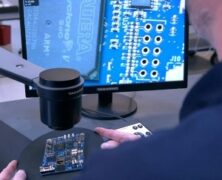Radars are a key element of the sensor suite in ADAS and autonomous mobility. The technology is already commercially used, particularly on various ADAS functions. Its use is set to increase in the short and long terms. In the short-term, legislation as well as voluntary safety commitments will push the adoption further. In the long term, the emergence of higher levels of autonomy will increase the radar content per vehicle, thus having a multiplier effect on the market.
These are exciting times for radar technology. Many changes are taking place. Here, we outline some key trends from our recent report “Radars 2020-2030: Technologies, Future Trends, Forecasts”. This report provides a detailed assessment of the technology. It considers how radar technology is evolving. It examines the drivers and trends in frequency worldwide. It assesses the trends in the choice of the semiconductor technology, as well as the lithographic node. It analyses the trends in packaging and also the trends towards higher degrees of function integration within the chip, e.g., DSP. The report examines and critically benchmarks low insertion loss materials including ceramic-filled PTFE, PI/fluoropolymer, LCP, LTCC, and many other materials.
The report also considers how radar performance is improving, in particular with respect to higher azimuth and elevation resolution. The report analyses the developments on the signal processing side. It discusses how the point cloud of radars is becoming denser and how methods are emerging to allow radars to detect, classify, and track many objects in 3D space across all weather and light conditions. These efforts are at an early stage and can be expected to dramatically improve as larger manually or semi-automatically labelled training datasets become available and the fusion techniques evolve.
Finally, the report identifies and overviews the key innovative starts-ups and emerging products on the market. It offers an in-depth review of the ADAS and autonomous mobility markets. In particular, it offers market forecasts (2020-2040), in unit numbers, for passenger cars, robotaxis and trucks segmented by level of autonomy from 1 to 5. It then forecasts radar unit sales numbers. Lastly, it develops two cost scenarios for radar modules (SRR/MRR and LRR) and thus two market value projections. To learn more see “Radars 2020-2030: Technologies, Future Trends, Forecasts”.









